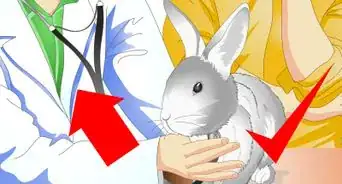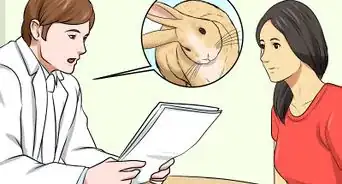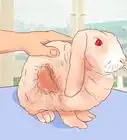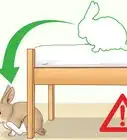This article was co-authored by Pippa Elliott, MRCVS and by wikiHow staff writer, Jessica Gibson. Dr. Elliott, BVMS, MRCVS is a veterinarian with over 30 years of experience in veterinary surgery and companion animal practice. She graduated from the University of Glasgow in 1987 with a degree in veterinary medicine and surgery. She has worked at the same animal clinic in her hometown for over 20 years.
This article has been viewed 33,317 times.
It's not surprising that your furry rabbit may suffer from heat stroke at some point. While it's possible for any kind of rabbit to get heat stroke, rabbits that have thick or long coats of fur, are overweight, are young, or are old are more likely to get heat stroke. As an owner, you should always pay attention for signs of heat stress in your pet regardless of risk. This is especially important with rabbits, since they try to hide when they're in distress.
Steps
Recognizing Symptoms of Heat Stroke
-
1Pay attention to your rabbit's behavior. If your rabbit is suffering from heat stroke, you may notice something is wrong without realizing exactly what it is. Your rabbit may seem extremely stressed, listless, quiet, and confused.
- Take care when handling your anxious rabbit. Any rough handling or extra stress could cause health damage.
-
2Monitor your rabbit's breathing. Look for fast breathing that seems like your rabbit is panting. Your rabbit may only be able to take rapid shallow breaths while keeping his mouth open. This means he's breathing through flared nostrils.
- He may also toss his head from side to side while he struggles to breathe.[1]
Advertisement -
3Look for drooling. If your rabbit concentrates very hard on breathing, he may forget that he needs to swallow. This causes him to drool or salivate. This difficulty breathing and drooling is a strong sign of heat stroke.
- The fur around your rabbit's nose and nostrils may also be wet if he has heat stroke.[2]
-
4Watch your rabbit's movements. If your rabbit has heat stroke, he probably won't move around very much. When he does move, he might be slow and seem uncoordinated. Your rabbit might be wobbly or weak on his legs.
- Some rabbits tremble, shiver, or have convulsions because of heat stroke.[3]
-
5Check your rabbit's ears. Look at the thinly furred inner part of your rabbit's ears. You should be able to see small blood vessels in the skin which give the ears a pink, red, or flushed appearance. This is because heat stroke can cause the blood vessels to dilate (get larger). The ears will also feel hot to the touch.[4]
- The rabbit's fur may seem dull and starry (ruffled or spiky).
-
6Consider the weather. To decide if heat stroke is likely, ask yourself whether it's a hot day. If so, think about whether or not your rabbit has been in the direct sun. Think about if he has access to water and shade.
- These factors can help you determine how serious the risk of heat stroke might be and what you'll need to do to help your rabbit.
Caring For a Rabbit With Heat Stroke
-
1Remove your rabbit from the heat. If you suspect your rabbit has heat stroke, you need to immediately cool him down. Start by bringing him out of the heat into a cooler environment. For example, if your rabbit is in a room with full sun, move him into a shady air-conditioned room.
- While you may think you should rush to the vet right away, start cooling your rabbit down before you take him.
-
2Cool your rabbit's fur. Use a fan to blow cool air over his fur, paying attention to his ears. This will help lower your rabbit's body temperature. You can also dampen his fur with cool water before blowing air over it to cool your rabbit more effectively.
- Don't apply ice or ice-water because the extreme temperature change could send your rabbit into shock.
-
3Offer water to drink. Give your water plenty of fresh cool drinking water. Place the bottle water dropper beside him so he doesn't have to move far to drink. You may also set out a bowl of water so your rabbit can choose between it and the bottle water dropper. The main thing is to keep your rabbit hydrated.[5]
- You can also put ice cubes in the water to keep the water chilly.
-
4Know when to get medical attention. At the first sign of heat stroke (as soon as you recognize symptoms), move the rabbit to a cooler area and contact the veterinarian. Since heat stroke can become lethal very quickly, your rabbit needs immediate veterinary care.
- In extreme cases, the vet may put your rabbit onto intravenous fluids which can cool his blood and support organ function.[6]
Preventing Heat Stroke
-
1Use frozen bottles to cool your rabbit. When the weather starts warming up (usually over 75 degrees), keep an eye on your rabbit's comfort. Be in the habit of freezing large water bottles. This way, you can place them next to your rabbit's side when it starts getting hot out.[7]
- If you're using an old soda bottle, be sure to remove the plastic wrapper from the bottle so your rabbit doesn't chew it off.
-
2Offer lots of fresh water. You might want to set out two bottle water feeders for your rabbit, especially if you'll be gone during most of the day when it's hot. This way, your rabbit will have plenty to drink, preventing dehydration.
- You can also add ice cubes to the bottle water feeder to keep the water cool.[8]
-
3Use a fan. Set up a small fan near your rabbit's hutch or cage. This slight breeze can keep your rabbit cool and prevent overheating.
- If you set up a fan, make sure your rabbit can't access the electrical cords. Rabbits love to chew, so keep these out of his way.
-
4Offer plenty of shade. If you keep your rabbit outside, he should have lots of shady places to rest. This doesn't mean you have to set up a large umbrella or keep your rabbit locked in his hutch. Just make sure there are larger leafy plants or trees under which your rabbit can get out from the direct sun.
- This is especially important if your rabbit has dark-colored fur which tends to absorb sunlight.
References
- ↑ http://www.rabbit.org/health/tilt.html
- ↑ http://rabbithaven.org/overheating/
- ↑ http://rabbithaven.org/overheating/
- ↑ http://rabbithaven.org/overheating/
- ↑ http://myhouserabbit.com/rabbit-health/recognizing-heat-stroke-in-your-pet-rabbit/
- ↑ http://myhouserabbit.com/rabbit-health/recognizing-heat-stroke-in-your-pet-rabbit/
- ↑ http://rabbithaven.org/overheating/
- ↑ http://rabbithaven.org/overheating/
About This Article
To diagnose a heat stroke in your rabbit, see if it seems stressed, quiet, or confused as heat stroke can cause all of these behaviors. You should also look out for other common symptoms like fast breathing, drooling, and shivering. Since heat stroke can make blood vessels larger, check if your rabbit’s ears look flushed with a more pink or red appearance. If you notice any of these signs, first bring your rabbit to a cooler environment, like a shady, air-conditioned room, and put a fan on it to help lower its body temperature. As your rabbit is cooling own, contact a vet so it can get medical attention as soon as possible. For more help from our Veterinary co-author, including how to prevent heat stroke in your rabbit, keep reading!
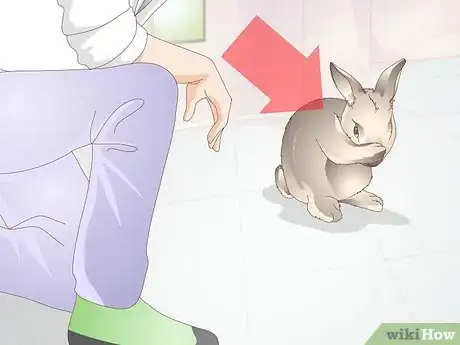

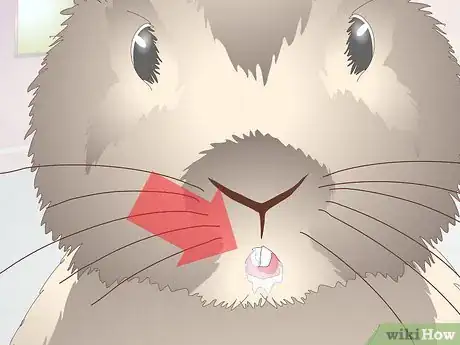
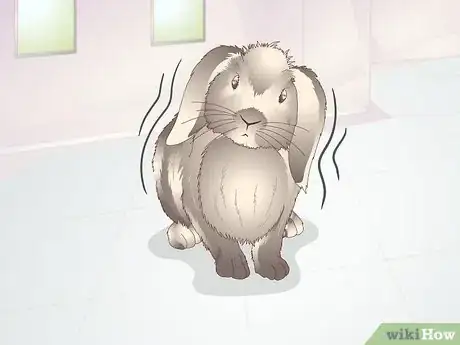
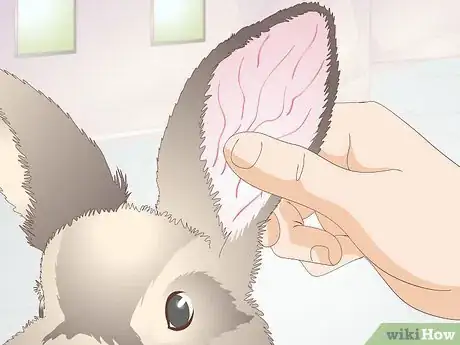
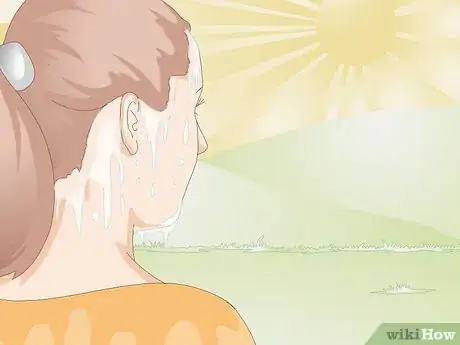
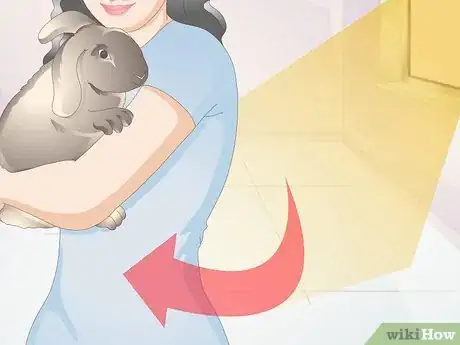
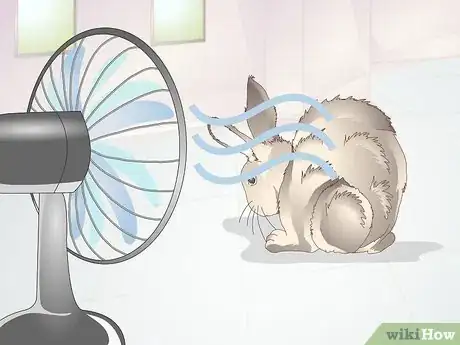
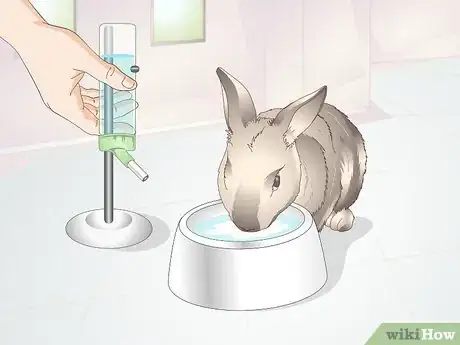
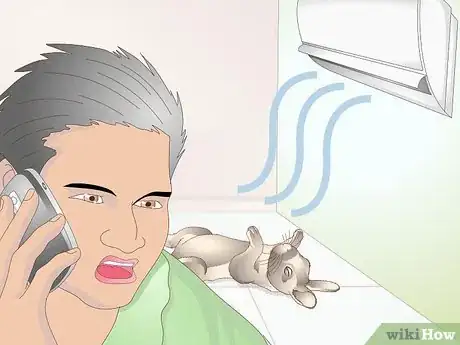
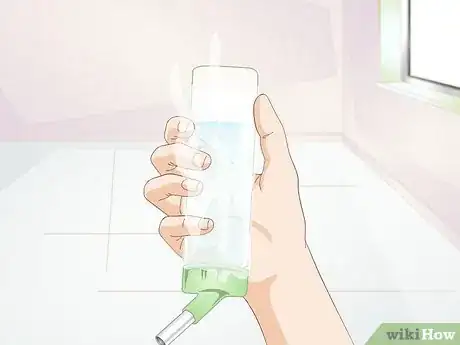
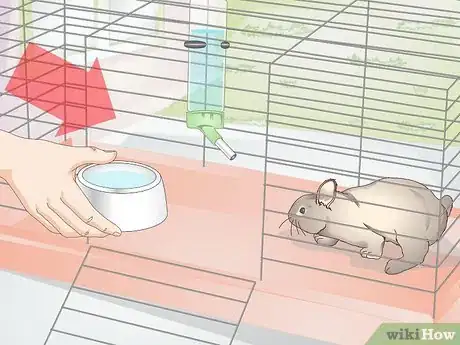
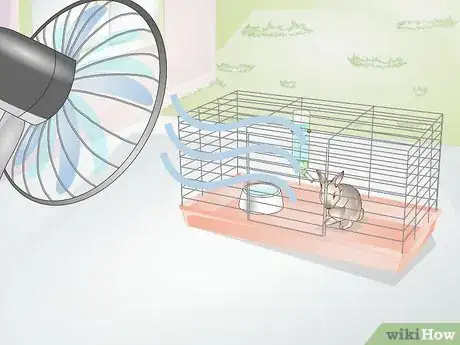
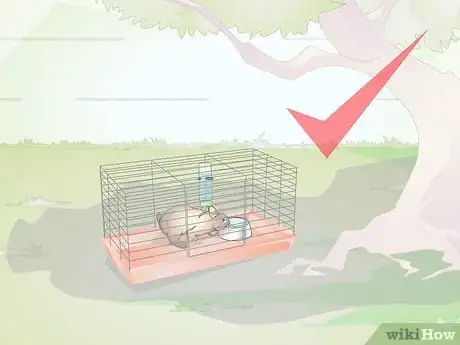
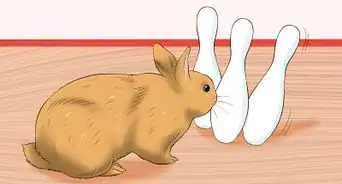
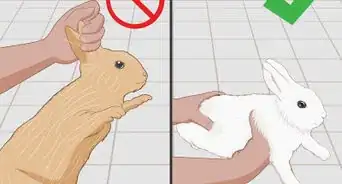
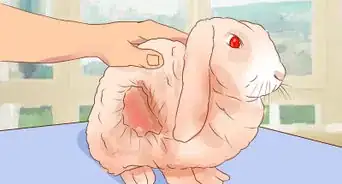
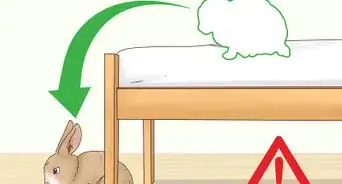


-in-Rabbits-Step-12.webp)

